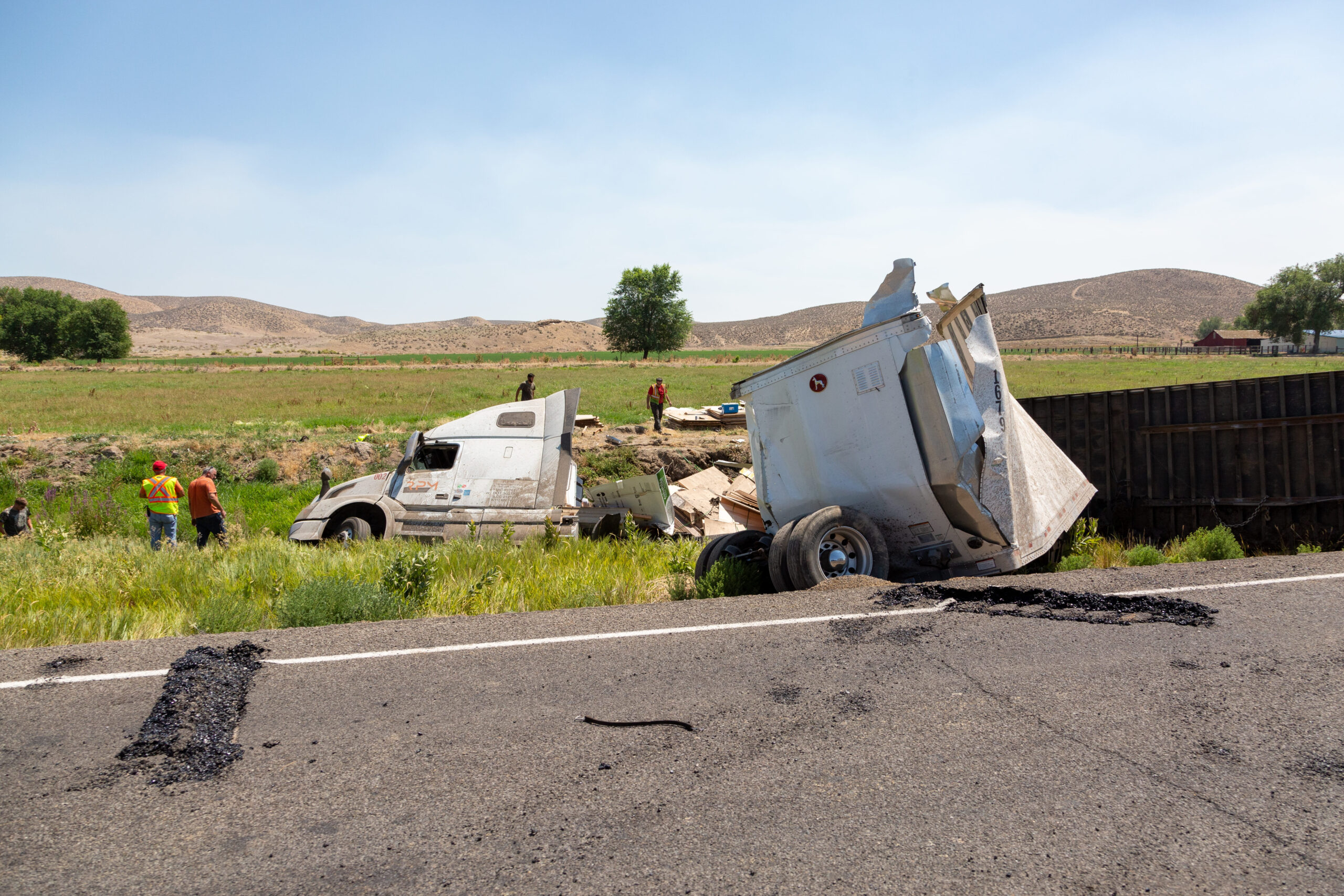Winter roads can be treacherous, especially for commercial truck drivers. The responsibility of maneuvering a large vehicle through icy, snowy conditions is significant, and understanding how to navigate these hazards is crucial for your safety and the safety of others on the road.
Learning how to avoid winter hazards on the road is one way you can prevent deadly and catastrophic truck accidents from occurring.
Understand the Risks of Winter Truck Driving
Winter driving presents a unique set of challenges. Black ice, decreased visibility, and unpredictable weather conditions can turn a regular route into a dangerous one. High-speed roads like freeways and highways demand even greater caution because the combination of increased speed and slippery conditions can easily lead to loss of vehicle control.
Awareness of these risks helps truck drivers make informed decisions about speed, following distances, and overall driving strategy. A commercial truck driver’s understanding and respect for winter driving hazards on these roads are crucial in preventing accidents and ensuring a safe journey for everyone on the road.
Steps to Avoiding Winter Truck Driving Hazards
If you’re a commercial truck driver, there are steps you can take to reduce the likelihood of getting into a serious and fatal truck accident.
Check Weather and Road Conditions
Before hitting the road, always check the weather forecast and road conditions. If severe weather is predicted, assess whether there is an alternative route you can take. Sometimes, rerouting or delaying your journey can mean avoiding the worst conditions.
Slow Down and Maintain Distance
Speed is a critical factor in winter accidents. On icy or snow-covered roads, the friction between your tires and the road surface is significantly reduced, increasing the likelihood of skidding or losing control of your vehicle. Reducing your speed allows you more time to react to unexpected hazards, such as sudden stops, sharp turns, or patches of black ice.
The stopping distance on icy roads can be much longer than on dry pavement. This is why increasing your following distance is crucial. It provides you with a larger safety buffer, reducing the risk of rear-end collisions if the vehicle in front of you stops abruptly.
Be Cautious on Bridges and Overpasses
Bridges and overpasses tend to freeze before other parts of the road due to their elevated nature, which allows cold air to circulate above and below the road surface. This makes bridges and overpasses prime spots for ice formation, even when the rest of the road appears clear.
When approaching these areas, it’s essential to reduce your speed significantly and avoid any sudden maneuvers such as sharp steering, abrupt braking, or rapid acceleration. These actions can lead to skidding or losing control on the icy surface. It’s also advisable to keep a steady pace and avoid changing lanes if possible, as lane markings can be obscured under snow or ice, increasing the risk of collisions.
Be especially vigilant for black ice on bridges and overpasses. Black ice is a thin, transparent ice layer that blends with the road surface, making it nearly invisible and treacherous. The key to safely navigating these areas is to be proactive, slow down in advance, and maintain a consistent, controlled speed while crossing.
Follow FMCSA Guidelines
Always follow the guidelines set forth by the Federal Motor Carrier Safety Administration (FMCSA), especially during the challenging winter months. One of the key aspects of these guidelines involves Hours of Service regulations, which may be adjusted in extreme weather conditions. Understanding these adjustments is important as they are intended to prevent driver fatigue, a common risk factor exacerbated by the demanding conditions of winter driving.
The FMCSA also requires strict vehicle maintenance and inspections. This includes ensuring that crucial components like brakes, tires, lights, and windshield wipers are in optimal condition to handle the harsh winter weather. Special attention should be given to tire tread and pressure and the effectiveness of heating and defrosting systems.
Additionally, the guidelines cover the proper use of accessories such as tire chains. These chains are essential for enhanced traction on snowy and icy roads. All commercial truck drivers should know how to correctly install and use these chains.
Remember, as a commercial truck driver, you play a crucial role in transporting goods, but your well-being is irreplaceable. By taking these precautions, you help ensure your safety and the safety of everyone sharing the road this winter season.
Contact Our Truck Accident Attorney Today
At Doubek, Pyfer & Storrar, our truck accident lawyers are here to help trucking accident victims after suffering a catastrophic injury. To explore your legal options, you can either fill out a contact form on our website, and we’ll contact you, or you can call us at 406-442-7830 to answer your questions immediately. Don’t wait. Contact us today!

John Doubek and the lawyers at Doubek, Pyfer & Storrar, PLLP have legal experience in auto crashes, defective products, medical negligence, work accidents, wrongful death, insurance bad faith, business disputes, and Securities and Exchange matters.

